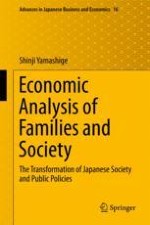2017 | OriginalPaper | Buchkapitel
8. Population Crisis
verfasst von : Shinji Yamashige
Erschienen in: Economic Analysis of Families and Society
Verlag: Springer Japan
Aktivieren Sie unsere intelligente Suche, um passende Fachinhalte oder Patente zu finden.
Wählen Sie Textabschnitte aus um mit Künstlicher Intelligenz passenden Patente zu finden. powered by
Markieren Sie Textabschnitte, um KI-gestützt weitere passende Inhalte zu finden. powered by
